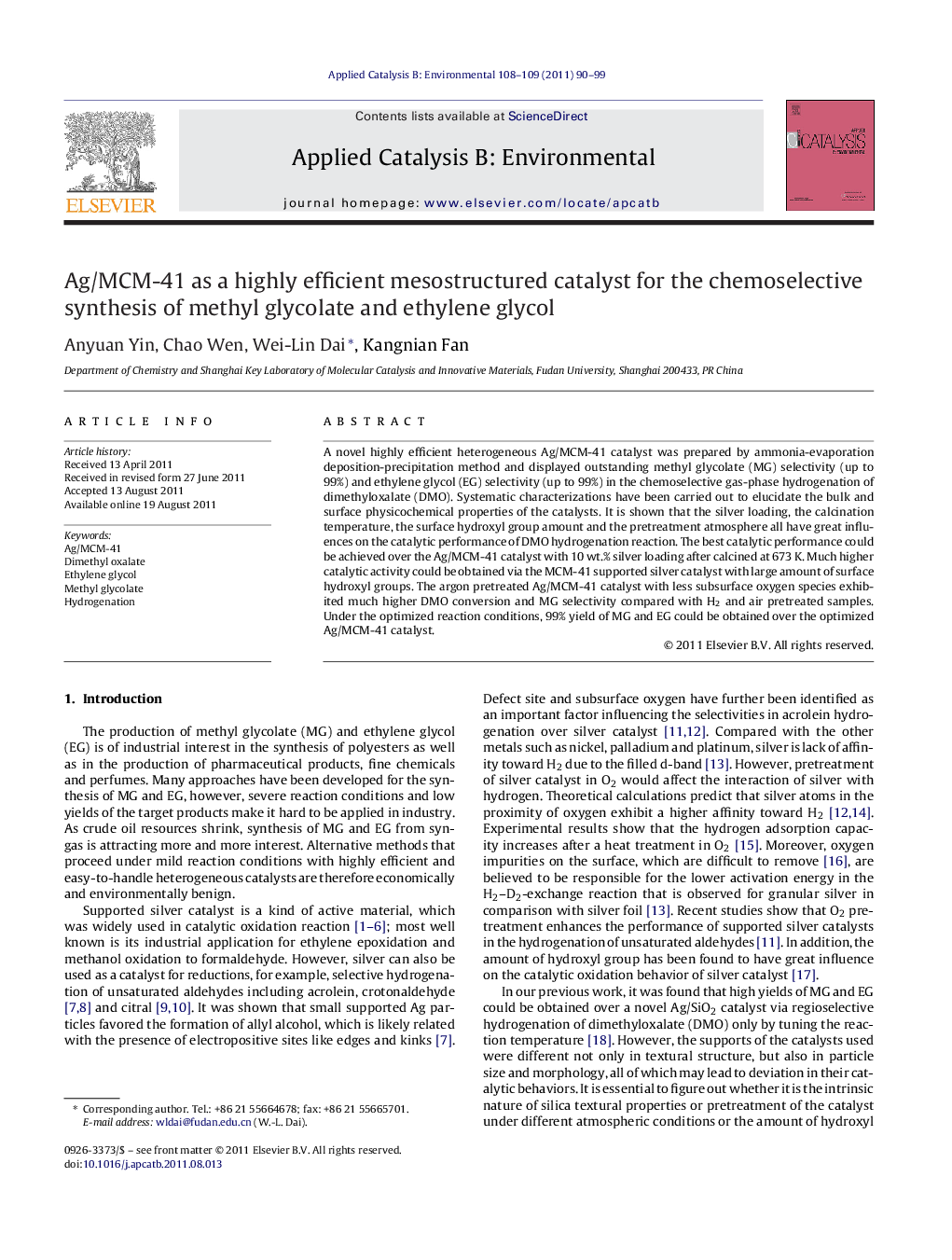| Article ID | Journal | Published Year | Pages | File Type |
|---|---|---|---|---|
| 46771 | Applied Catalysis B: Environmental | 2011 | 10 Pages |
A novel highly efficient heterogeneous Ag/MCM-41 catalyst was prepared by ammonia-evaporation deposition-precipitation method and displayed outstanding methyl glycolate (MG) selectivity (up to 99%) and ethylene glycol (EG) selectivity (up to 99%) in the chemoselective gas-phase hydrogenation of dimethyloxalate (DMO). Systematic characterizations have been carried out to elucidate the bulk and surface physicochemical properties of the catalysts. It is shown that the silver loading, the calcination temperature, the surface hydroxyl group amount and the pretreatment atmosphere all have great influences on the catalytic performance of DMO hydrogenation reaction. The best catalytic performance could be achieved over the Ag/MCM-41 catalyst with 10 wt.% silver loading after calcined at 673 K. Much higher catalytic activity could be obtained via the MCM-41 supported silver catalyst with large amount of surface hydroxyl groups. The argon pretreated Ag/MCM-41 catalyst with less subsurface oxygen species exhibited much higher DMO conversion and MG selectivity compared with H2 and air pretreated samples. Under the optimized reaction conditions, 99% yield of MG and EG could be obtained over the optimized Ag/MCM-41 catalyst.
Graphical abstractHigh yield of methyl glycolate (MG, >99%) and ethylene glycol (EG, >99%) could be obtained via the gas-phase hydrogenation of dimethyl oxalate over Ag/MCM-41 catalyst synthesized via ammonia-evaporating deposition-precipitation method under the optimized reaction conditions.Figure optionsDownload full-size imageDownload as PowerPoint slideHighlights► A highly active and selective Ag/MCM-41 catalyst was prepared for the first time. ► This catalyst was applied in the gas-phase continuous hydrogenation of DMO to MG and EG. ► The DMO conversion and the selectivity to MG and EG can be up to 100%, and 99%. ► The best Ag/MCM-41 catalyst obtained after calcined at 673 K with 10 wt.% loading. ► Different pretreatment atmosphere leads to different catalytic performance for this catalyst.
